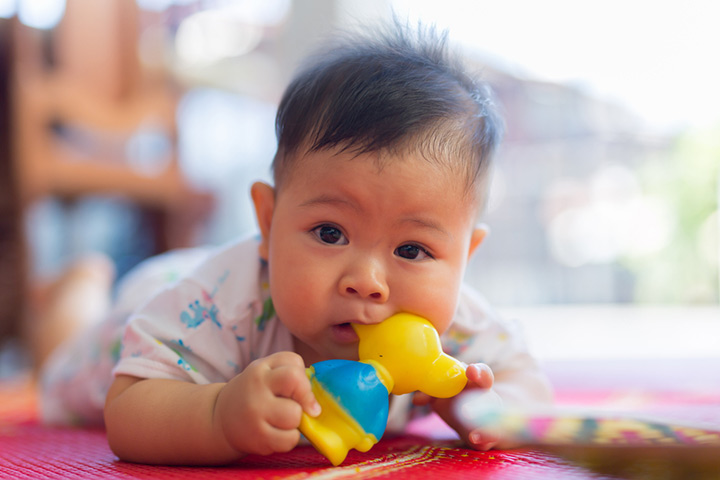
Image: Shutterstock
A crying baby is a parent’s worst nightmare. They feel scared, worried, and helpless when their infant starts to cry, making them quite stressed. Because your baby entirely depends on you. As a parent, you provide your baby comfort, food, warmth, and care as and when they need, and when your baby cries, it’s their way of communicating that they need something. New parents often struggle with this as it takes time to understand your baby’s language. Eventually, you will be able to know why your baby is crying. But as new parents, you often wonder why and get stressed about it when you cannot figure it out. Every baby is different, so no hard and fast rule points to a particular reason, but here are some of the most common reasons why your baby cries:
1. Hunger
You know you get cranky when you’re hungry, and so does your baby. You might be startled that your baby begins to scream and cry in no time, but it’s their way of saying that they are hungry. With some time and practice, you will be able to distinguish this cry from the rest. So you’ll know that your baby needs food when you hear it. One way to avoid this is to feed your baby at regular intervals and follow a system where you time your feeding. So, you know when you have to feed your infant next before they start crying.
2. Diaper Change
Image: Shutterstock
Nobody likes to feel dirty. It causes irritability and makes you snappy. That’s the case with your baby too. A dirty diaper makes them cry because it’s wet and uncomfortable. You could do a quick sniff test to check if they need a diaper change. However, some babies sit in a dirty diaper all day without a care in the world. Therefore, to maintain good hygiene, it’s good to check their diaper from time to time.
3. Sleep
Another classic reason for crying babies is sleepiness. Like you get cranky if you have not had enough sleep, your baby too cries and throws tantrums because they are sleepy. You could hold your baby and gently rock them from side to side, sing lullabies to them, or swaddle them to sleep.
4. Burp Time
Image: Shutterstock
Most often, when babies cry after they are fed, it’s because they want to be burped. You might be confused at first because you just fed them, but you will learn your baby’s burping techniques over time. Because there is more than one. You have to find the one that works for your baby.
5. Needs Attention
It is no secret that babies love attention. Infants tend to cry when they need care. They like to be held and carried, but doing this all the time is not practical. Therefore, it is good practice to allow your baby to spend some time alone in a safe playmat while keeping an eye on them (of course). It enables babies to learn to stay away from their caregivers in a healthy way.
6. Teething
Image: Shutterstock
Babies start teething as early as 6 months, and it is an uncomfortable process. If your baby is gnawing at objects more often than before, has sore gums, and start rubbing their ear a lot, it might be teething signs. Some babies take up to 12 months to start teething, so don’t fret if your baby is taking the time. However, most of them start at around 6 months (1).
7. Sickness
Image: Shutterstock
It’s a fact that no one likes being sick. But as adults, we can express our discomfort and deal with our illness. What do babies do? They cry. A lot more than usual. You know your baby’s crying patterns, so if they continue to cry for prolonged periods, it is a good idea to call your pediatrician and get your baby checked.
While it is quite heartbreaking when your baby cries, with time you’ll know why they are crying and will be able to console them. It takes time to get there, so do not beat yourself up for taking the time to figure it out. It does not make you a bad or lousy parent. What do you do when your baby cries? Comment below and let us know.
















